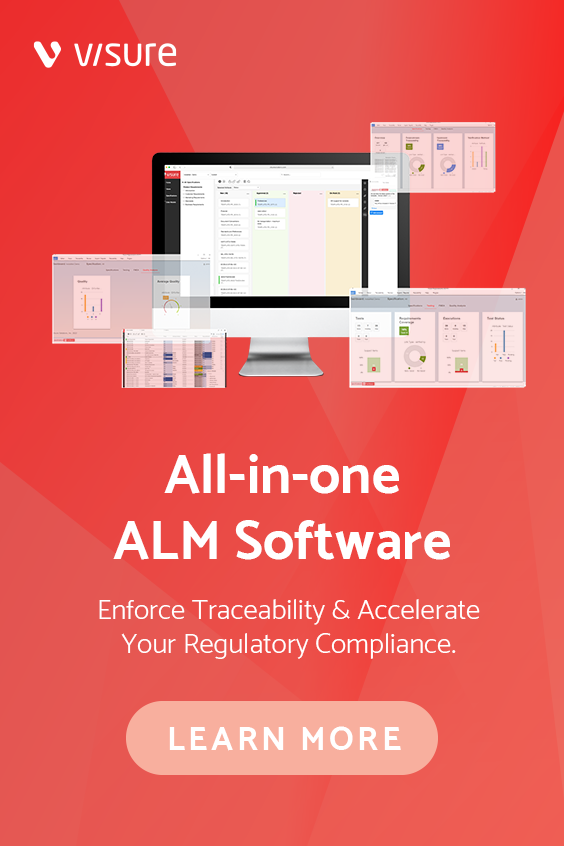Introduction
In the world of software development, ensuring traceability is a critical aspect of quality assurance. Traceability ensures that every requirement in the software development lifecycle (SDLC) is linked to its design, implementation, and testing. However, manual traceability processes are time-consuming and error-prone. To address this issue, many organizations are turning to automation to achieve end-to-end traceability coverage.
The Importance of End-to-End Traceability
End-to-end traceability involves linking requirements to all the artifacts created during the SDLC, including design documents, test cases, and code. This ensures that each requirement is fully implemented and tested, thus improving the overall quality of the software product.
End-to-end traceability offers several benefits:
- Risk Mitigation: Traceability helps identify and mitigate risks early in the SDLC, reducing the likelihood of defects in the final product.
- Regulatory Compliance: Many industries require strict documentation and traceability for compliance with regulatory standards. End-to-end traceability ensures that all regulatory requirements are met.
- Improved Collaboration: Traceability promotes better communication and collaboration among development teams, testers, and other stakeholders by providing a clear understanding of the relationship between requirements and other artifacts.
Challenges of Manual Traceability
While traceability is essential, manual traceability processes are often inefficient and error-prone. Some of the challenges associated with manual traceability include:
- Time-Consuming: Manually linking requirements to various artifacts throughout the SDLC is a time-consuming process, especially as the size and complexity of the project increase.
- Error-Prone: Manual processes are prone to human error. It’s easy to miss linking a requirement to a relevant artifact or to make mistakes when updating traceability links.
- Difficulty in Maintenance: As requirements change over time, maintaining traceability links manually becomes increasingly challenging and resource-intensive.
Automating Traceability Coverage
Automating end-to-end traceability coverage addresses many of the challenges associated with manual traceability processes. By leveraging specialized tools and technologies, organizations can streamline the traceability process and ensure comprehensive coverage across the SDLC.
1. Requirement Management Tools
Requirement management tools, such as IBM Engineering Requirements Management DOORS, provide features for managing and tracing requirements throughout the SDLC. These tools allow organizations to create, manage, and link requirements to other artifacts, such as design documents, test cases, and code.
2. Traceability Matrices
Traceability matrices provide a visual representation of the relationships between requirements and other artifacts. Automated traceability matrices enable stakeholders to quickly identify missing or incomplete traceability links, allowing them to take corrective actions as needed.
3. Integration with Testing Tools
Integrating requirement management tools with testing tools, such as HP ALM or Microsoft Test Manager, allows organizations to automatically generate test cases from requirements and link test results back to the original requirements. This ensures that all requirements are adequately tested and that test coverage is measured.
4. Continuous Integration and Deployment (CI/CD) Pipelines
Incorporating traceability checks into CI/CD pipelines ensures that traceability is maintained throughout the development process. Automated checks can verify that all new code changes are linked to the appropriate requirements and that test coverage is adequate before deployment.
Conclusion
Automating end-to-end traceability coverage is essential for ensuring the quality and reliability of software products. By leveraging specialized tools and technologies, organizations can streamline the traceability process, reduce errors, and ensure compliance with regulatory standards. By automating traceability coverage, organizations can gain full requirements traceability and measure structural coverage, making it easier to achieve standard certifications and deliver high-quality software products.
Sign Up For The Upcoming Webinar:
Learn how traceability enhances transparency, mitigates risks, and ensures all project requirements are met. Discover strategies for implementing structural coverage analysis to ensure thorough testing and alignment with industry standards such as ISO 9001, CMMI, and DO-178C. Our experts will share best practices, tools, and techniques for maintaining traceability and achieving compliance.
- Importance of Requirements Traceability: Understand why traceability is essential for meeting all project requirements and how it enhances transparency and risk management.
- Achieving Requirements Traceability: Explore techniques and tools for capturing, managing, and tracing requirements to ensure consistency across documentation.
- Understanding Structural Coverage: Learn about different levels of structural coverage and their significance in assessing testing thoroughness.
- Implementing Structural Coverage Analysis: Discover strategies for incorporating structural coverage analysis into the software development process, including selecting coverage criteria and leveraging code coverage tools.
- Alignment with Standard Certifications: Explore how traceability and structural coverage measurement align with industry standards such as ISO 9001, CMMI, and DO-178C, and their importance in compliance and audits.


